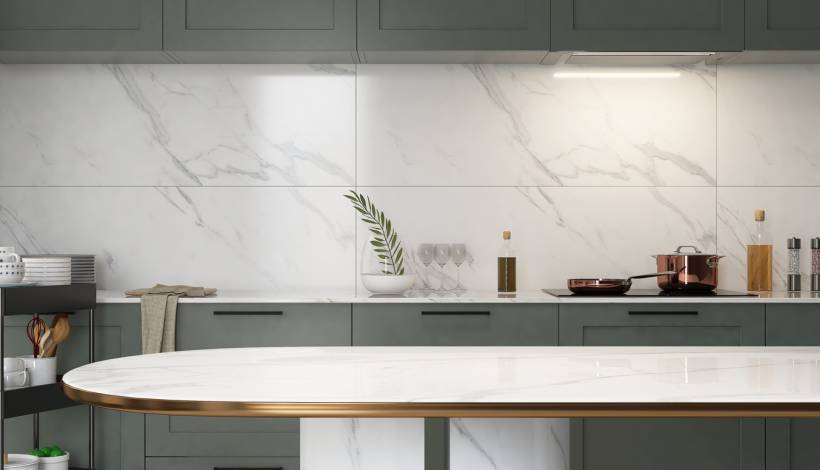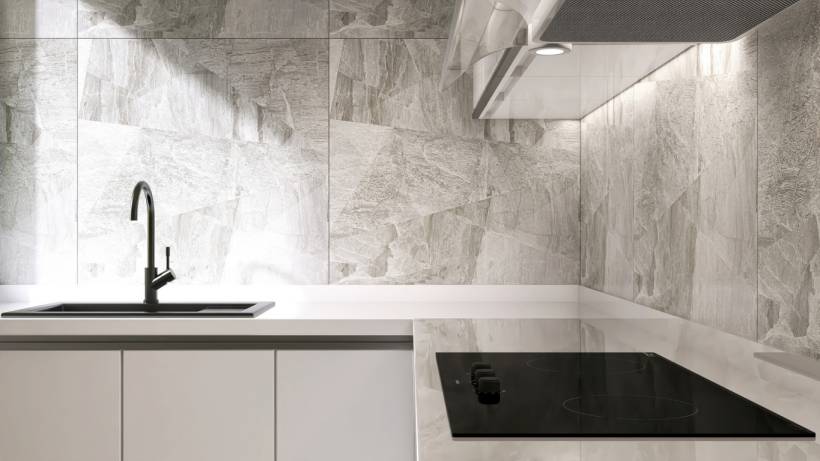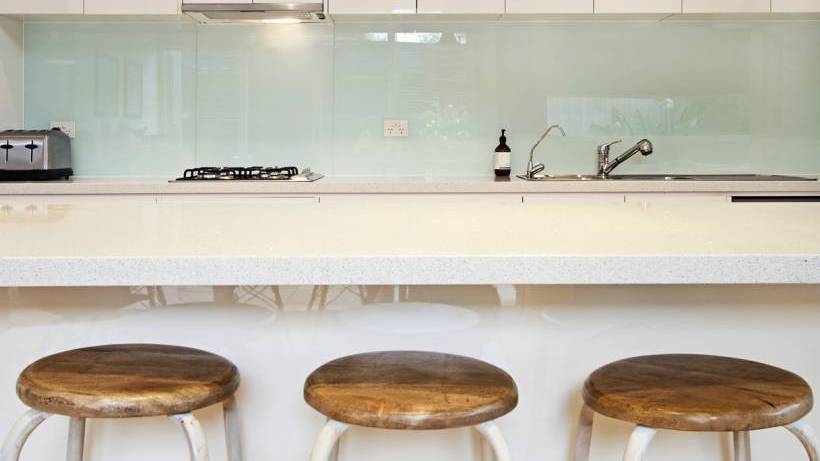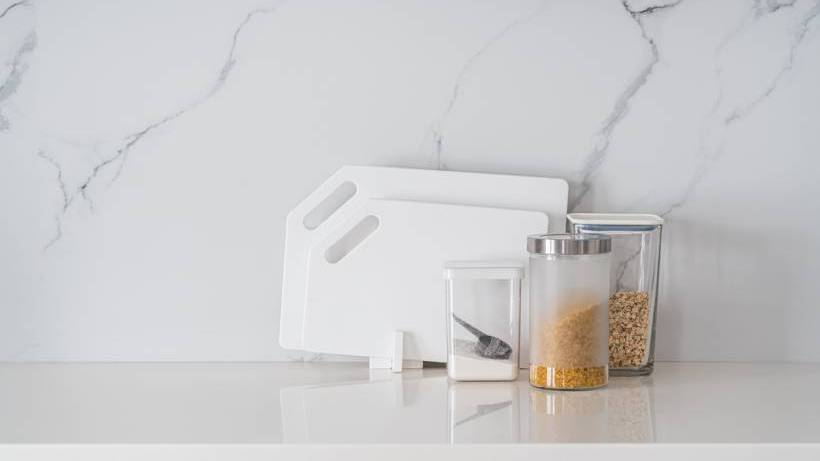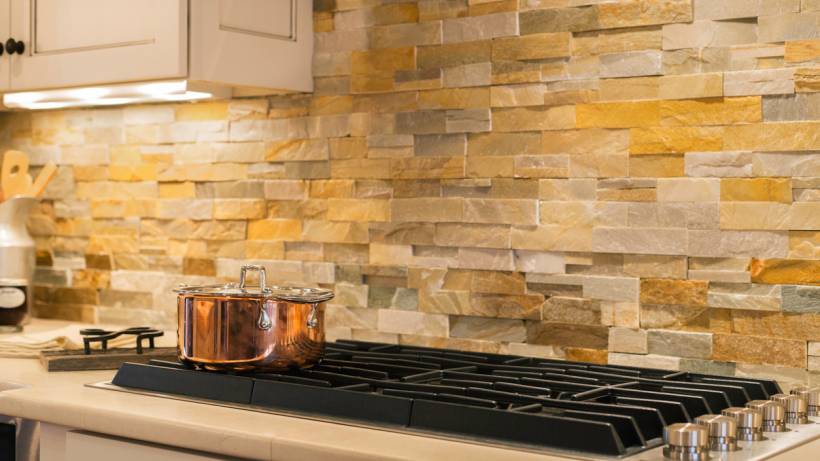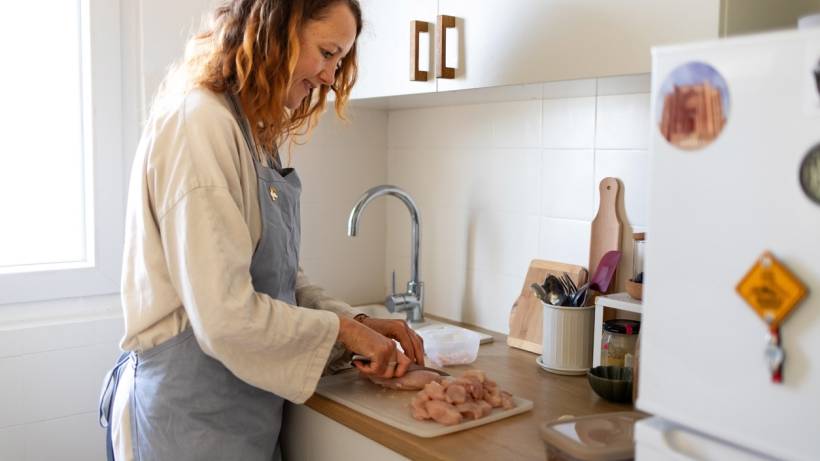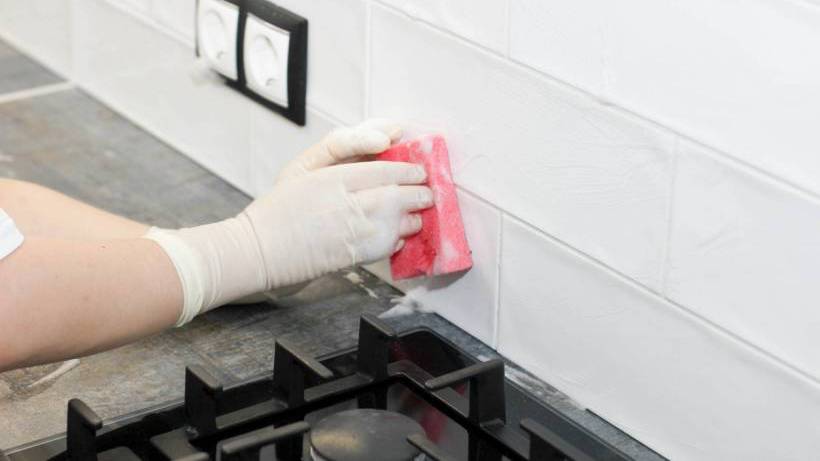It might seem small, but well-painted kitchen cabinets can liven up your space and make your kitchen more enjoyable. Not only does it add colour and life to your home, but it’s also a budget-friendly DIY project. A kitchen cabinet painting project can also be fun for your family!
If you don’t know how to paint kitchen cabinets, don’t fret. It’s a simple project with a satisfying result that will invigorate your kitchen in no time.
Tools and materials you’ll need
Claiming you know how to paint laminate kitchen cupboards takes more than just a brush and some paint. Doing it properly takes a few tools to ensure your paint job is neat and beautiful.
- Bucket
- Primer
- Paint for kitchen cupboards like oil-based paint, latex paint or acrylic enamel paint
- Paint brushes and rollers
- Screwdrivers and drills
- Masking tape
- Scrubbing materials like brushes and sandpaper
- Wood filler
- Putty knife
- Soap
- Protective gear like gloves and masks
While the methods aren’t necessarily difficult, the time it takes to complete this project depends on the number of kitchen cabinets you’re working with. Following our step-by-step guide can take you an entire weekend for a modestly-sized kitchen or a whole week if you have a massive kitchen to transform. If you can’t commit much time, consider hiring a professional.
The essential steps to painting your kitchen cupboards
Step 1: Prepare and clean the kitchen space
Before you start painting cabinets, you have to prep the space around them. If you plan to paint in the kitchen, this is especially important as you don’t want paint to bleed onto any other surface. Even if you’re painting outside, you still need to clean the surroundings to make sure you can manoeuvre the furniture in and out effortlessly.
Clear out the room and make sure there are no utensils and appliances in the way before you start your kitchen painting project.
Step 2: Remove the cupboard hardware

Use your screwdriver or a drill to detach the cabinet doors from where they’re attached. Find the hinges and make sure you take them out without damaging the surrounding area. This part is somewhat time-consuming, especially because you’ll need to disassemble the different cabinets as well.
Make sure you detach all the removable hardware, like knobs and hinges. You’ll also want to find screws holding drawers together and try to break them down into all their separate pieces to ensure full coverage when you paint your kitchen cabinets.
Step 3: Clean the cupboards
A crucial but severely overlooked step in this project is cleaning the cabinets to guarantee a smooth paint job. First, you must run through the hardware with a damp rag to get rid of any blemishes on the cabinets, whether from food or other dirt that can accumulate in your kitchen. You can also use dish soap to get rid of any stubborn stains and blemishes on the wood.
This step also prepares your wooden drawers for sanding, as any grease or dirt can be further pushed in when pressure is applied. While at it, you should also prepare the area you’ll use for painting. Lay down some brown builder’s paper on the floor to prevent mess.
Step 4: Repair scuffs with wood filler, then sand

On older cabinet units, you’ll have small nicks, scratches and dings that can be hard to deal with when you start painting them. The best way to fix bigger blemishes is by using wood filler, a special material that can be applied with a putty knife to smoothen your cabinet’s surfaces.
Next, you’ll have to sand the cabinets. This prepares the surface and lets you apply the paint to achieve a smooth finish. Lightly sand all around the cabinet, especially in exposed areas like the cabinet door. This can be an arm workout, but it’s the only way to get an even cabinet surface after painting.
Step 5: Start priming
Painting without a primer is a big mistake. Primer improves paint adhesion and ensures a durable finish when you finish painting. Determine the kind of cabinet boxes you have, whether laminated or wood, before running to your paint store to get the right primer for your cabinet frames. Protect your cabinets using tape to protect the parts you want to stay paint-free.
Use long and even strokes when putting on the primer with a paintbrush or a paint roller. Apply it on every surface that will be painted, even the sides and the back. Every primer is different, so read the manufacturer’s instructions to know how long to dry the primer before moving on.
A pro tip: If brush marks are evident after applying primer, use sandpaper to smooth it before painting.
Step 6: Paint your first coat

The best way to apply new paint evenly is by doing multiple layers of thin coats rather than one thick layer. This gives you a more even application and leads to a paint job that doesn’t easily chip.
To start with your first coat, you should apply it across the surface in even, parallel brush strokes to prevent drips and rough surfaces. Let the coat of wet paint dry, then sand it again and wipe with a tack cloth to remove any sanding dust before moving on to your next coat.
Step 7: Apply more coats
The second coat of your paint will make your drawer fronts pop. After your first one dries and is cleaned of any dust that could have settled, go in with another fresh coat that’s just as clean and even as the first one you did. Afterwards, repeat the drying and sanding process to prep for any further coats.
Usually, two coats are enough for a perfectly adequate paint job, but a third coat can make your cabinets’ colours more vivid and prolong the life of your freshly painted cabinets. Just note that it’s very time-consuming to keep on applying layers. Once you’re happy with the colour, let the cabinets dry fully, which can take overnight.
Step 8: Paint all the pieces properly

Make sure your paint is applied well, and coat your cabinets completely. While the drawer fronts and cabinet doors are the most important parts as they are the ones people see first, it’s also good to paint the sides and the back of your kitchen cabinets as they get seen when in use. Put a thin paint coating on them and watch your paint finish feel slightly more elevated.
Step 9: Dry and put the drawers back
Once you’ve finished painting your kitchen cabinets, you need to let them dry completely. Afterwards, remove all the tape from your cabinet doors and drawers and remove dust from all the surfaces. Reattach all the different hardware pieces, like the hinges and the knobs.
Carefully put back each drawer and cabinet door. Even if your paint is fully dry, fresh paint still gets chipped easily, so you need a delicate hand to avoid bumping the pieces on any kitchen counters.
What to use: a paint roller or a paintbrush?
As you paint kitchen cabinets, you might be wondering if you should be using a paint roller or a paintbrush. Both tools have their advantages and disadvantages, and in fact, you might need to use a combination of the two for your newly painted kitchen cabinets to look their best.
Paint rollers cover a big area with each stroke. The most common type of roller is a manual roller, and it’s the one that’s available in all hardware stores. Use this tool to cover the cabinet doors’ flat sides. It leaves clean and even coats very quickly, so having a roller in your toolbox can make your project much quicker. You might also need unique rollers for special kinds of paint, like latex paint.
Paintbrushes help you apply paint on more embellished kitchen cabinet doors. If your cabinets and drawers have intricate details and non-detachable knobs, you will need to paint around these places with a precise paintbrush. Brushes also work best with oil-based paint, a common paint for kitchen cabinets.
There’s a third option that’s less common but highly effective: paint sprayer. You get the coverage of a paint roller while also being able to paint precisely like a brush. However, kitchen cupboard spray paint and paint sprayers are expensive and require practice to use, so if it’s your first time doing a big painting kitchen renovation project, you might want to hold back on spray painting kitchen cabinets and leave it to the pros.
Make painting kitchen cabinets much easier
Kitchen cabinets take up much of the visual space of your kitchen, so painting them is a great way to brighten up and add colour to a vital part of your home! With a tack cloth, a paintbrush and paint of your choice, you can create beautiful cupboards with minimum effort all in one weekend. Whether you choose to paint or spray kitchen cabinets, just make sure you’re tidy and apply the paint in clean and even coats to guarantee your success.
If you’re pressed for time and can’t commit a weekend or a whole week for this kitchen beautification project, or if you just don’t have confidence in your painting skills, then it might be time to ask help from a professional house painter. Equipped with everything they need to turn any kitchen into a beautiful space, interior house painters can bring new life to your kitchen cabinets!
FAQs on painting kitchen cupboards
Can I just paint over my kitchen cabinets?
It’s more complicated than simply buying paint. There are a few things to consider before painting over your old fixtures. If it was sealed with any wax, as some painted cabinets are, you must remove it before painting. If your cabinets were painted with oil-based paint, then water-based paint won’t adhere to it, and vice versa. Also, if the finish of the paint isn’t intact anymore, you’ll need to sand your cabinets before applying paint over them.
Do I have to sand the cabinets before painting?
If you’re repainting your cabinetry, you should sand before starting the process. Over time, the cabinets can get small nicks that can be annoying to deal with while painting. Sanding can smooth the surface for a better paint application.
Is it better to brush paint or spray paint kitchen cabinets?
Brushing paint and spraying paint aren’t too different in terms of results, but they differ when you’re applying the pain. Brushing takes a lot of time, but it’s also a more precise and easy way to get paint onto your cabinet doors. Spray paint takes a deft hand and more skill, so it’s not recommended for paint novices.
